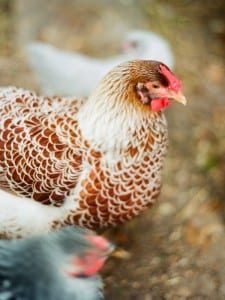 My girls are excited to be the topic of conversation for us all today. And by my girls, I mean my quite beautiful (if I do say so myself) backyard hens. Last spring, I decided that I wanted to get chickens. I spend a lot of time in our vegetable garden during the spring/summer/fall months so I thought the girls would be a nice addition for both enjoyment and for purpose. As with gardening, I love the thought of our son getting to experience first hand where our food comes from. He was only 11 months when we got our chicks but now at 18 months, ‘chicken’, ‘egg’ and ‘bawk bawk’ are among the other words he’s learning. And our girls lay the most beautiful eggs, including a sea foam blue, light pink and brown. So he’s learning colors in an unusual way, too. It’s safe to say that hens are playing their roles quite well. They are both enjoyable and purposeful, and I love the lessons I’m learning from being a mama to hens. Have you considered getting your own backyard chickens? If so, here are a few initial points to consider.
My girls are excited to be the topic of conversation for us all today. And by my girls, I mean my quite beautiful (if I do say so myself) backyard hens. Last spring, I decided that I wanted to get chickens. I spend a lot of time in our vegetable garden during the spring/summer/fall months so I thought the girls would be a nice addition for both enjoyment and for purpose. As with gardening, I love the thought of our son getting to experience first hand where our food comes from. He was only 11 months when we got our chicks but now at 18 months, ‘chicken’, ‘egg’ and ‘bawk bawk’ are among the other words he’s learning. And our girls lay the most beautiful eggs, including a sea foam blue, light pink and brown. So he’s learning colors in an unusual way, too. It’s safe to say that hens are playing their roles quite well. They are both enjoyable and purposeful, and I love the lessons I’m learning from being a mama to hens. Have you considered getting your own backyard chickens? If so, here are a few initial points to consider.
The Coop :: There are several ready-made options available but don’t put off the idea of creating your own. We converted an old dog pen (4’x12′) and a dog house inside of it to be our coop. The actual coop is about 6 feet tall and the ‘hen house’ is raised off the ground inside of it. This is where the girls roost at night. There are smaller options, including mobile tractor coops that you can move to different areas of your yard. Whatever route you take, it is so very important that you make sure it is completely built before you purchase the chickens and is predator proof. You want your chicken adventure to be fun, and having to finish putting their home together once you already have chickens will be a headache. Not to mention, you could lose your entire flock in one night if its not complete.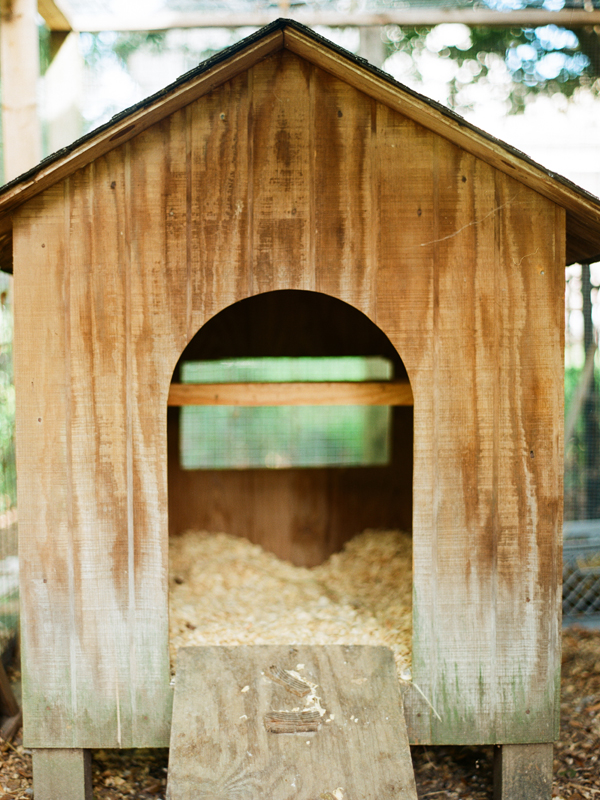

The Breeds: : I was selective about my birds, and you can be as well! I’m a creative person so things like color of both the birds and their eggs matter to me. Who knew there were so many options of chicken breeds out there?! And the breed determines more than I realized, such as the number of eggs you’ll get in a week and the colors and sizes of the eggs. After doing some research, I decided to get our chicks (all but one were 1-day old) from a lady in Ethel, Louisiana. I liked the idea of meeting the farmer and seeing the environment where our chicks came from. We have a silver-laced wyandotte, blue-laced-red wyandotte, and a lavendar ameracauna bantam. The wyandottes lay light brown and pink eggs, and the ameracauna lays little sea foam blue eggs.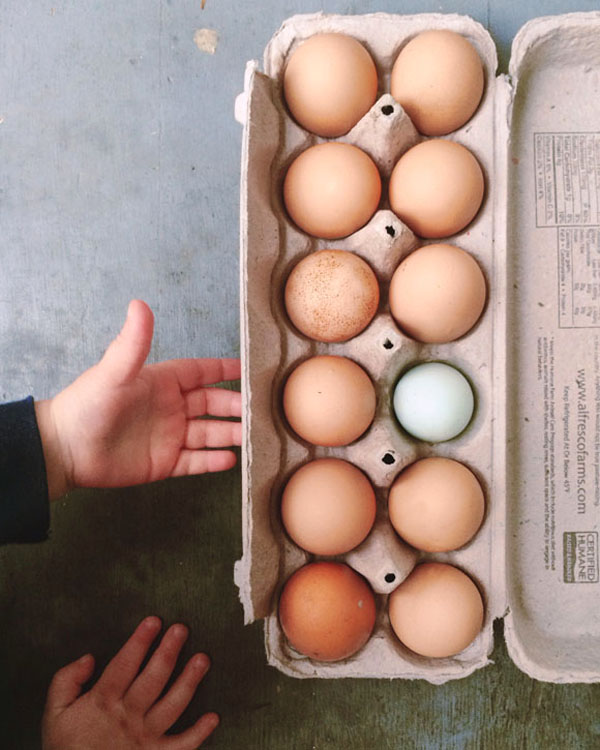

To Free-Range or Not to Free-Range :: This somewhat depends on your coop and on your preference. My girls free-range, which means I let them out of the coop in the morning, they range around the yard openly throughout the day, and they put themselves to roost at night. I then go lock up the coop and repeat the process the next day. Sadly, we lost our first hen just last week from a hawk while I was gone from the house. We mourned her loss (she had just started laying eggs a few days earlier) but the fact remains that all my girls have been free-range for nearly 10 months and this was the first problem we’ve had. I’m more cautious about it now, but I’m continuing to let them do so because that’s part of the reason we got them in the first place … to have fresh eggs from free-range yard chickens.)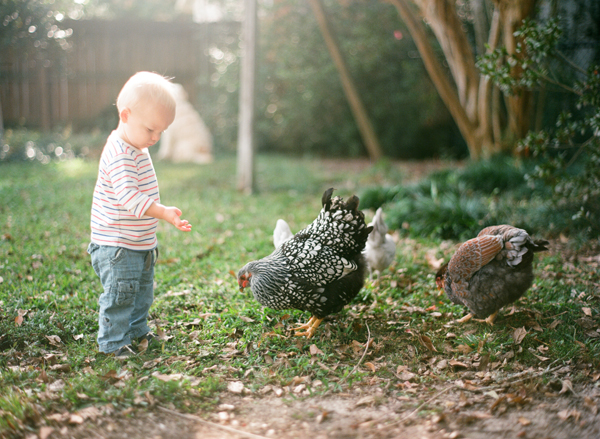

Predators :: As mentioned above they can be a deadly problem. This is my least favorite part but it has to be mentioned. At some point, you’ll lose a chicken, and it’ll be a very sad day. The best way to prevent this is by making sure your coop is very well-secured. Who knew that raccoons can figure out a lock that isn’t securely fastened? I have read horror stories about night predators taking out an entire flock. If you choose to free-range by day, be sure that you have a securely gated area for them where neighborhood dogs or other animals can’t get in easily. Other things to keep an eye out for in our area are hawks and foxes. 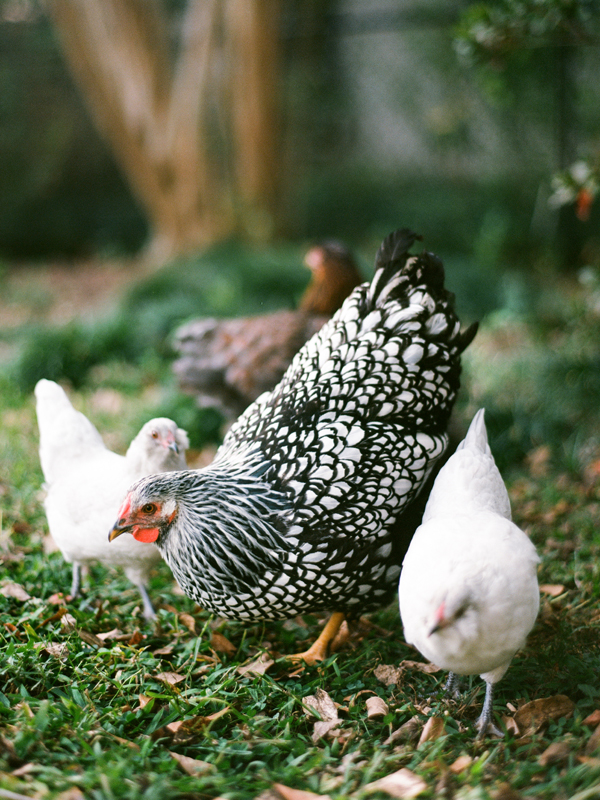

Fruits of Your Labor … Eggs! :: There are several factors that determine when your hens will start laying eggs with the main ones being the specific breed, the weather, the amount of sunlight in a day, and their diet. Don’t set an expectation that you’ll have eggs right away. It takes a few months. I got our chicks in early June of last year, which put them at prime laying season just when the weather was getting cold. This meant we had a winter with very few eggs (only one of my girls was laying before winter because she was a little older). But they do indeed start to lay! Just 3 weeks ago, all of my girls started laying, and we now average 3 eggs a day. It is the most rewarding prize after 9 months of care. The egg colors and the rich, deep gold yolks speak for themselves. They are absolutely beautiful and so very delicious. And our son loves when we go out to collect the eggs each day (although I don’t let him carry them quite yet otherwise I don’t think they’d make it into the kitchen.)

If you’re interested, you can read more about our chicken adventure here, here and here. Two great online resources are www.backyardchickens.com and www.mypetchicken.com
About Holly
Holly is a photographer+calligrapher by trade, a wife, and a mama to a sweet boy, a fur-baby golden doodle, and a small flock of backyard hens. She gave birth to her son two weeks before her husband started law school, and she quickly realized this season of life would look a little different than the norm. She’s learning how to be a full-time mama, run a creative business, get healthy meals in her family’s bellies, and keep her head on straight…enough. She created Maison Everett, a lifestyle blog, as a space to inspire herself (and hopefully others) to seek beauty and fullness in the everyday as a mother and a creative. You can view her professional work at www.katherineholly.com and her personal musings at www.maisoneverett.com. Feel free to follow along on Instagram @katherineholly where her “girls” often make a debut! All of the photographs are copyright Katherine Holly LLC and are photographed on medium format film.
















